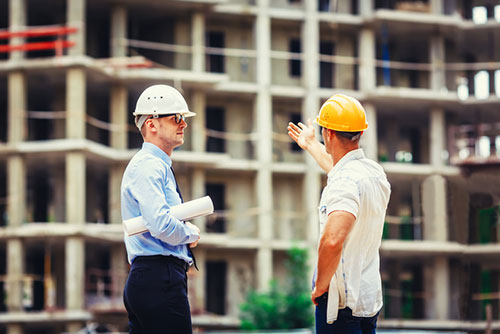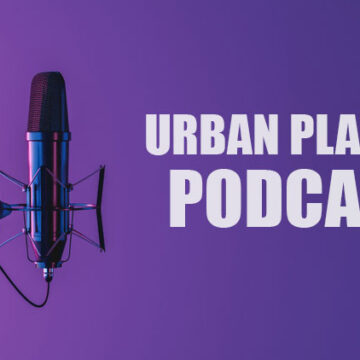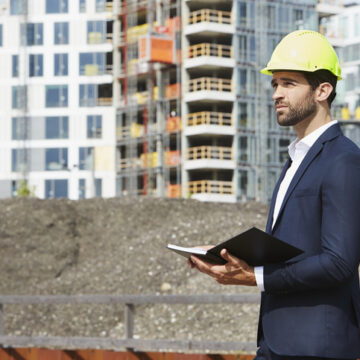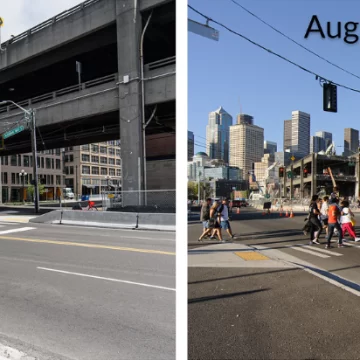What is Urban Planning?
Have you ever thought about becoming an urban planner? Many people do not understand what, exactly, urban planners do and what the job of an urban planner is focused on. Urban planners help to direct a city’s or town’s development. The profession of urban planning is involved in improving the life and health quality of not just what is traditionally thought of as “urban” spaces, but of all spaces in which human beings live. Whether you live in a city, suburb, town, village or rural area, urban planning has affected you in one way or another. In short, urban planners are responsible for “planning” the spaces in which we live.
The planning profession is geared toward the future, but also seeks to improve living conditions in the present. Planners do just that – plan for the living spaces they hope to shape now, as well as five, ten, twenty, and more years into the future. Their planning efforts to mold their communities also affect neighboring small towns, larger nearby cities and the world as a whole.
Urban Planning
Education Requirements By State
Education and Preparation for Urban Planners
Urban planners typically require a masters degree in urban planning or a related field. If a degree in regional, city, community or urban planning is not available, other fields that work well for those pursuing a job in urban planning include architecture and related services, natural resources and conservation, business, and social sciences. Additionally, professional certification is available for planners who hold a graduate degree and two or more years of professional experience. Take your time to research and find the best urban planning school for you.
Urban Planning Now and in The Future
The Bureau of Labor Statistics has projected that employment levels for urban planners will grow by 11 percent from 2018 to 2028. This growth rate is much faster than the average for other occupations.
The 2010 U.S. Census noted that 14 of the nation’s 15 largest urban centers had experienced slower population growth than originally projected. Urban planners now face a challenge of what to do with vacant areas of cities once people and businesses have vacated. As public interest shifts away from inner cities and people worry more about the environment and economic consequences of the future, the profession of planning has been renamed “urban planning.” Urban planners today deal with addressing climate change, focusing on housing affordability, making sure that everyone is represented and has equal access to housing and services, and regulating of the form of buildings, not just land usage. Their decisions will help to shape the future in the short- and long-term.
Daily Job Duties of Urban Planners
What do urban planners do, on a daily basis? Some of their duties include:
- Writing and designing plans
- Implementing plans
- Meeting with government officials
- Meeting with other professionals such as engineers and architects
- Shaping policies
- Engaging with the public, addressing concerns of the community in making plans
- Taking all of the information they have learned from their research, the community and from other professionals and synthesizing it into a plan that will be presented before government officials
Job Titles for Urban Planners
Urban planners can go by many names and titles, including (but not limited to):
Types of Careers
Learn about the many sectors of Urban Planning
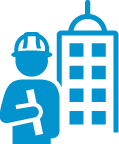
Urban Planning
Urban planners develop plans for land use and revitalization of urban areas.

Public Policy
Public policy is an extremely broad field that encompasses many different types of jobs.

Real Estate
Real Estate Agents, also known as Real Estate Sales Persons and Real Estate Sales Agents, are...
The History of Urban Planning
How has the planning professional’s role changed throughout history? When cities were first begun in the U.S., they were often perceived as being dirty and overcrowded. Early planners tried to locate industry as far as possible from residential living spaces in order to avoid pollution and minimize filth and disease. Today’s planners no longer have the opportunity to plan cities from scratch, like early founders and planners of cities did. They can, however, help to revitalize and reshape cities, especially by turning blighted areas into vital ones.
After zoning ordinances were enacted by local governments in the 20thcentury, planning became centered mainly on land use and on deciding where to locate residential, retail, office and industrial uses within cities. Transportation systems became quite important as well, as planners figured out how people would get from one area of usage to the other. Suburbs were created as residential areas were moved away from urban/city areas.
Planning was once a heavily male-dominated field. Now, however, as of 2018 and per Data USA’s statistics, women make up 49 percent of the planning profession. In fact, one of the most important proponents of modern urban planning was a female named Jane Jacobs. This urbanist/activist who died in 2016 wrote much about a community-based approach to building urban areas. In “The Death and Life of Great American Cities,” Jacobs wrote that “Cities have the capability of providing something for everybody, only because, and only when, they are created by everybody.”
Top 10 urban areas that utilize public transportation systems:
- New York City/Newark, NJ
- San Francisco/Oakland, CA
- Washington, D.C.
- Boston, MA
- Chicago, IL
- Seattle, WA
- Portland, OR
- Philadelphia, PA
- Los Angeles/Long Beach/Santa Ana, CA
- Baltimore, MD
The Future of Urban Planning
When they think about the future, urban planners are concerned with ideas such as:
- How will transportation in a particular area work in the future?
- Where will people live in the future?
- Where will people work in the future?
- How will people access physical infrastructure and systems necessary to support them in the future, and how can we ensure that those systems will be present and provide enough services for them?
Mixed-use communities are becoming commonplace, as residential, retail and public transportation spaces are located within the same neighborhood. Today’s planners are also designing cities with pedestrian and bike areas linking residential, work and retail spaces. This minimizes pollution from transportation and improves the health of the people at the same time.
Other Professionals Who Work with Urban Planners
Urban planners work closely with the fields of and with professionals in transportation, the environment, the economy, physical infrastructure, history, culture, politics and urban design. Planners also work hand-in-hand with government officials to help plan the future of communities. They utilize the services of architects and engineers in shaping plans. All of these professionals work together to plan living spaces for the future. Urban planners act as an intermediary among professionals to keep these intersecting conversations going. They may describe themselves as “professional generalists.”

